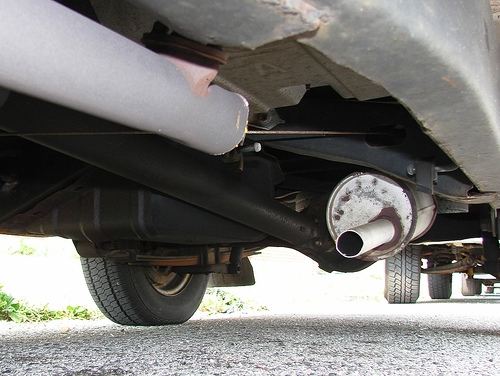
Though it could just as easily be a case of varying fuel quality as one of planned obsolescence, the fact remains that catalytic converter failure amongst fifth- and sixth-generation (1996-2006) Toyota Camrys is endemic. Not only can ignoring this problem lead to catastrophic engine damage, it can also be very expensive to fix and difficult to prevent in the future.
Catalytic converters are connected to the exhaust pipes, usually just behind the engine where the opposing bank's manifolds join into one pipe. These devices concentrate and store exhaust heat in a honeycomb-like matrix and use it to convert the engine's most toxic emissions to more inert forms. Cats were legislated as mandatory in the early '70s, and are found on every car sold in the United States since then.
Prior to the widespread usage of automotive cats, all gasoline used dissolved lead to both protect the engine and prevent detonation. However, it was quickly discovered that lead and other additives would attach themselves to the converter's matrix, clogging and rendering it worthless. Today, the most common cause of cat failure is overheating, though matrix contamination still remains an issue.
Though fifth- and sixth-generation cars are prone to cat overheating, the problem seems especially overbearing on 2001 models. The first sign of failure is a persistent "check engine" light, which can come on at start-up but is more likely to do so after extended idling. When the cat becomes terminal, it will affect fuel economy, acceleration and top-end power.
Modern engines use one or a pair of oxygen sensors (O2 sensors) in the exhaust stream to determine how much fuel the engine is burning relative to air intake. This is important because if there is too little fuel in the mix, the engine will run much hotter, damaging it and overheating the cat. According to some dealership mechanics, Camrys seem to have a defect in the O2 sensor that causes it to fail prematurely, but does not trigger a "check engine" light. Upon sensor failure, the computer goes into "open-loop" operation and uses its best guess on air/fuel ratio to run the engine, which will often be too lean in lower altitudes .
Replace the O2 sensor with a sturdier aftermarket unit, like those produced by Bosch. If your cat is damaged, you can pay $2,000 for a stock replacement, but a generic $300 unit will work just as well and will still retain emissions compliance. Make sure to reset the engine's codes after replacement.